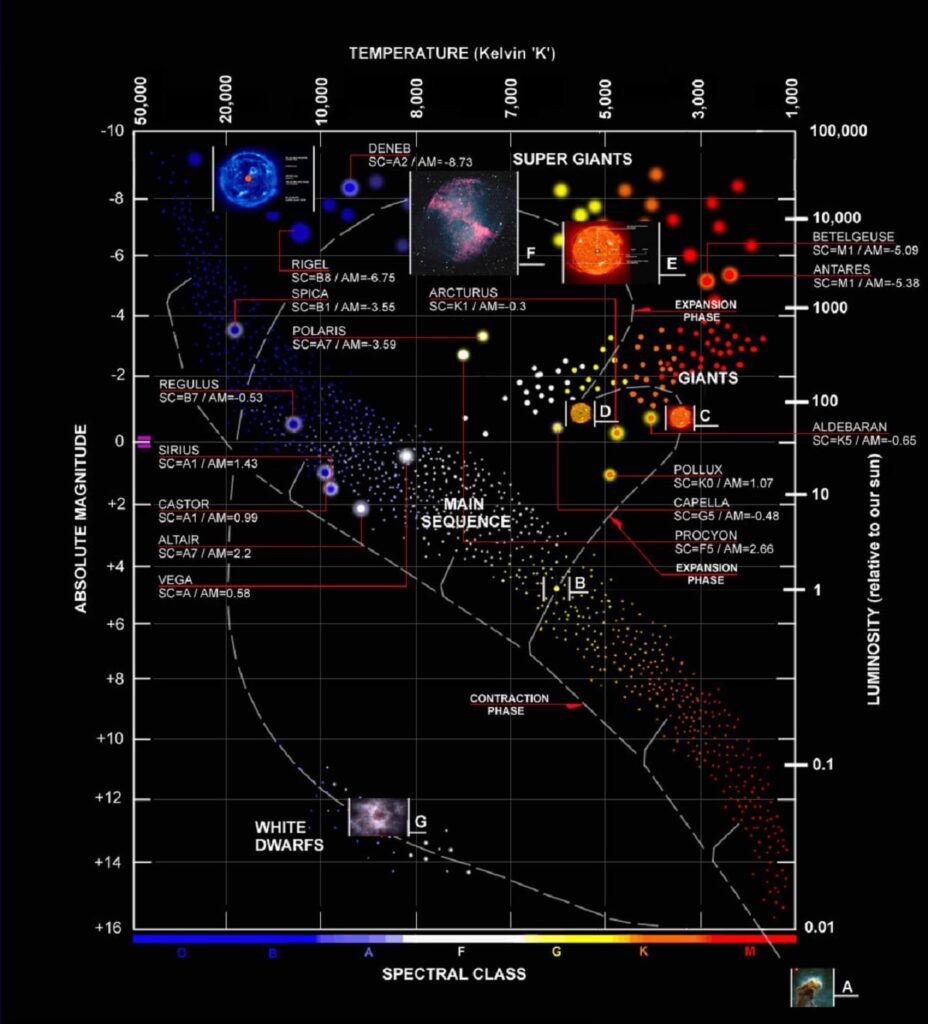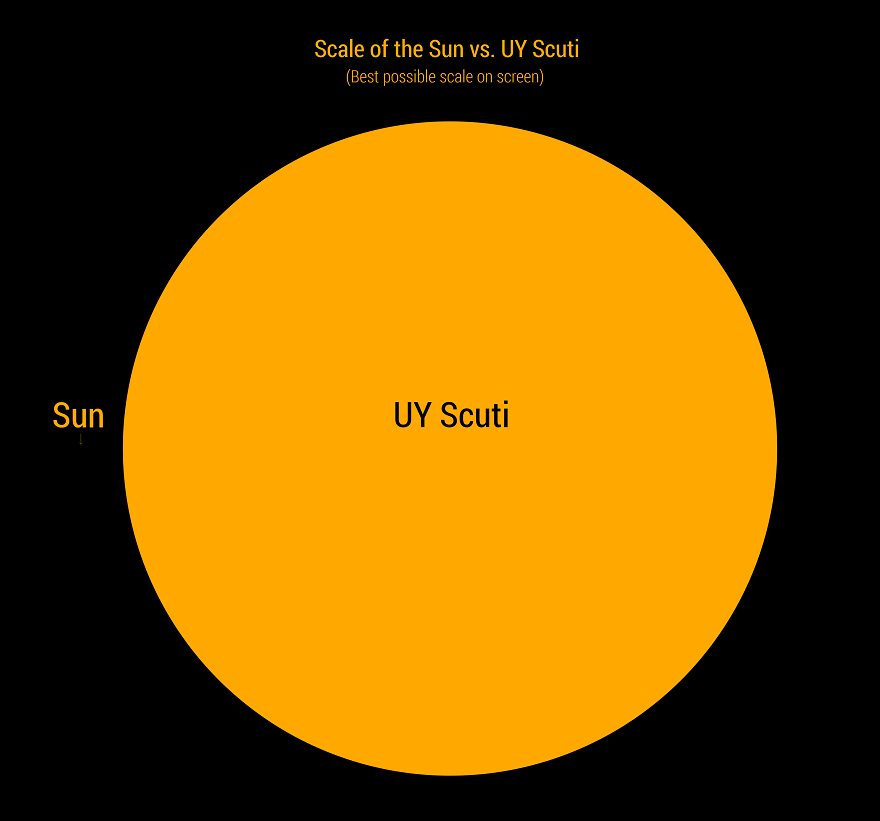What are stars?
Large, high-temperature celestial bodies with their own light and energy, gas clouds.
But how are they created?
Gravity and hydrogen, then helium.
They are born from clouds of gas and dust, which over several tens of millions of years begin to thicken due to external influences (for example, the explosion of a massive star). As a result, they attract more and more material to themselves and become smaller and hotter. These clouds mix and transform into molecular hydrogen, which we call a nebula. Or we refer to them as the nursery of stars.
This is how the so-called protostar is born. Protostars collapse in on themselves after a while and continue to thicken. When their core reaches 10 million degrees, nuclear fission occurs, which produces helium. Helium is the soul, fuel, and lifeblood of stars. This, their mass, their size, determines how long they can live. Their lifespan is thus determined at birth. As is what they become and what they leave behind when they pass away.
The formation time of a star similar to our Sun, for example, is several tens of million years from the time of nuclear fission.
You can already read about our Sun HERE, it is worth taking a look before you continue.
We can determine the nature and physical properties of stars, for example: based on their light (magnitude), temperature, mass, spectrum (spectroscopy – letter designations: O, B, A, F, G, K, M, R, N, S), radiation (luminosity), and chemical composition.
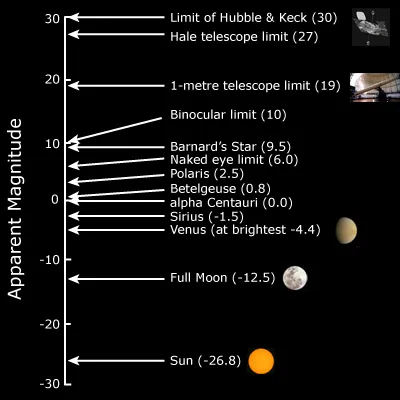
But what about Dwarfs and Giants?
We classify the evolution of stars essentially with these titles. There is a so-called Hertzsprung – Russell diagram (H-R diagram or HRD). This diagram was developed by Danish-Dutch astronomer Ejnar Hertzsprung (1873-1967) and American astronomer Henry Norris Russell (1877-1957) based on the physical properties of stars. It classifies and presents the evolution of stars:
A Brown Dwarf, for example, is so small in mass that it cannot reach the high temperatures required for nuclear fission.
Currently, our Sun (a low-mass star, by the way) is a Yellow Dwarf (G-class) halfway through its life. =) Because it is yellow in color and is quite small compared to giant stars (which are of medium size anyway). It will become a Red Giant when it runs out of fuel. By then, it will be much larger, and then it will shed its outer shell, from which the planetary nebula (we see them as gray spots or fluff in telescopes; such as: the Dumbbell Nebula and the Ring Nebula) is born. Its core will turn into an Earth-sized White Dwarf, which will take billions of years to cool down. It will then turn into a Black Dwarf.
A Red Supergiant is Betelgeuse, for example. It is one of the main stars in the constellation Orion.
It could become a supernova in the foreseeable future.
Its diameter is about 700 times that of our Sun and it is more than 500 light years away. In the last 20 years it has started to “wake up” itself more spectacularly. As a result, it has started to fade and become smaller. It could turn into a supernova in about a few hundred thousand years from now. Its light will be so strong that it will be visible in the daytime sky for a few weeks, and then only a nebula will remain after it.
The Polaris, or the North Star, is also a supergiant, 431 light years away, in the constellation Ursa Minor.
The closest star to us after our Sun is Proxima Centauri, 4.24 light-years from Earth. Its diameter is one-seventh that of our Sun. This is where the Voyagers headed. You can read more about it HERE.
Now, is it a nova, a nebula, or a black hole?
This is determined by the mass and gravity of the star. The greater the mass of a star, the shorter its life, because the more helium it uses to stay alive. And the amount of helium it has is finite, it receives the amount it has at its disposal when it is born.
Regardless of their size, all stars are born the same way: hydrogen collapses under gravity, which causes an increase in temperature, until nuclear processes begin. Finally, after they run out of fuel, they begin to produce substances similar to lithium, carbon, and oxygen from helium. From there, the demise of stars will be different.
Planetary nebula
The core of the stars that create this nebula is no longer able to heat up enough to produce elements heavier than the chemical elements mentioned above. Gravity wants to contract the star, while nuclear processes want to expand it. This causes the star to cool and expand, becoming a Red Giant. At a certain point, their core cannot shrink any further, and an explosion occurs. Their core becomes a White Dwarf, and their discarded outer layers (which were left unfused due to the star’s mass) become a Planetary Nebula.
Since the core is small, it cannot pull its outer layers into itself during the process. Thus, the heavier chemical elements in the core did not fuse with the outer layers.
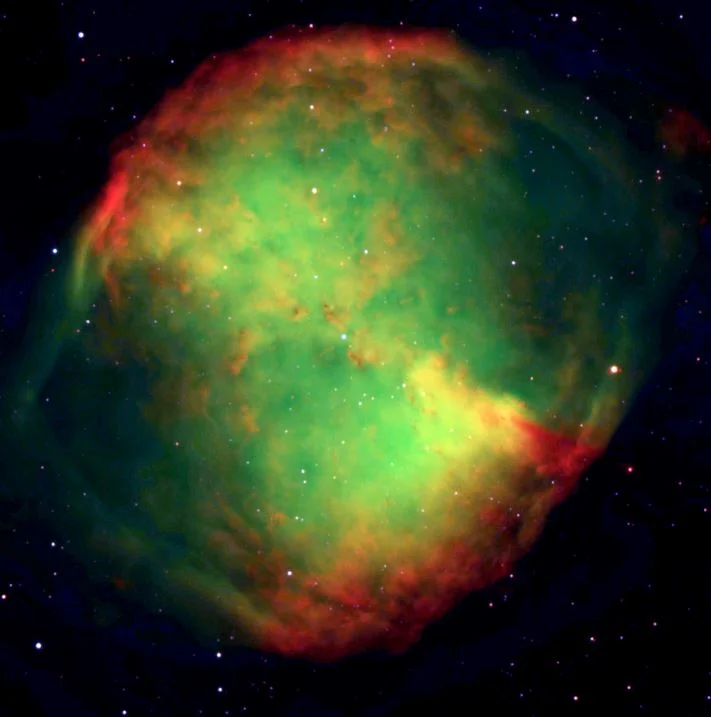
Supernova
It occurs in stars with a mass greater than our Sun. The core of these stars is large enough to fuse all the chemical elements from lithium to iron. After this happens, the core collapses due to gravity, causing an explosion called a supernova. Supernovas release so much energy that their light illuminates an entire galaxy, producing more energy than a star produces in its entire lifetime.
The other elements of the periodic table after iron are formed in supernovae.
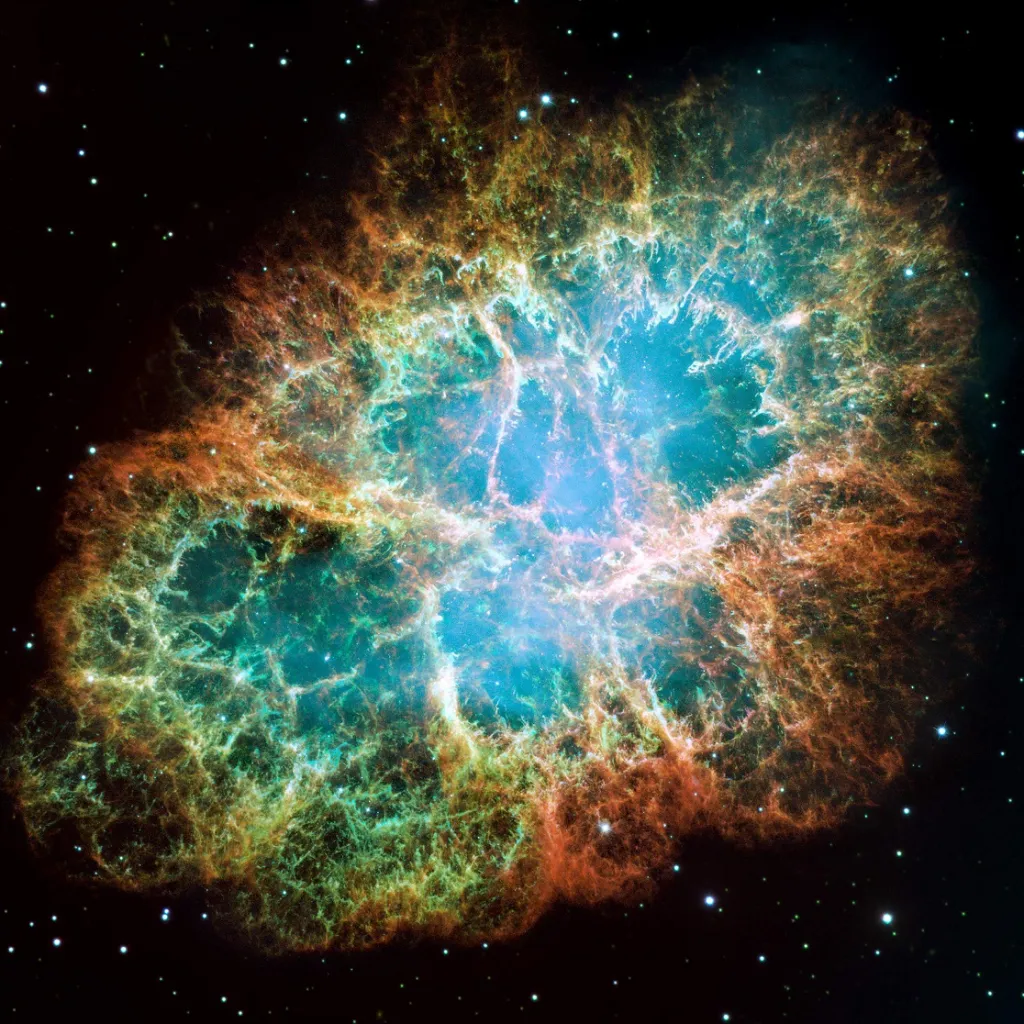
Black hole
They can arise from Giant stars, Supergiants. Due to certain chemical reactions, the energy is not released in the core of the star, but continues to “eat” itself. A kind of gravitational collapse occurs, which is compressed into a volume smaller than a critical value. The matter is compressed into a single point, where the density, space-time curvature becomes infinite. This is a gravitational singularity. In a part of the space surrounding it, the gravity is so strong that nothing, nothing is released from here.
So, the many elements that the death of a star leaves behind, everything that is scattered, is scattered in space, they are all the foundations of old – new stars, planets, moons, life. Foundation of us.
Quoting Carl Sagan:
We are made of star – stuff.
Be a Nerdy Bird!
